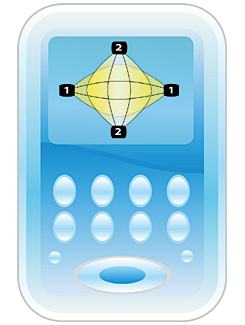
INTERFERENTIAL
|
Interferential
This type of current is called interferential because it forms and interferes with the soft tissue at the point where the two alternating medium frequency currents intersect.
Interferential current (IFC) is a medium (2500 Hz – 4000 Hz – 10000 Hz) frequency alternated sinusoidal current of wide modulation characterised by its ability to effect deep tissue penetration and is easily tolerated even by those patients most sensitive to pain.
The analgesic action of the bipolar interferential current, with a modulating frequency of between 0 and 200 Hz, is sent to the gate control mechanism, to stimulate the inhibitive mechanism, to block the peripheral pain transmission, and to remove the pain stimulators of the affected area, just like a transcutaneous electro nerve stimulation (TENS) current.
Varying the frequency of the modulation used a motor exciting effect can be produced which contributes to the return of venal blood flow by activating the “muscular pump”. .
Clinical Applications
Interferential current is particularly adapted for use in treating deep joint arthritis (hip, lumbar rachis), deep seated tendonitis and muscular hypotrophy of deep seated normally innervated muscles.
Interferential current therapy is usually applied in physiotherapy for motor excitement and for its analgesic effects.
Therapeutic effects
Motor excitement effects: it provokes the contraction of deep seated normally innervated muscles
Analgesic effects: It can provoke the dilation of blood vessels which, due to the increase in blood flow, could remove pain stimulators from the tissue.
It is used for the treatment of the following pathologies:
Arthritis (hip, lumbar and cervical rachis)
Tendonitis: Hip and shoulder tendonitis
|



